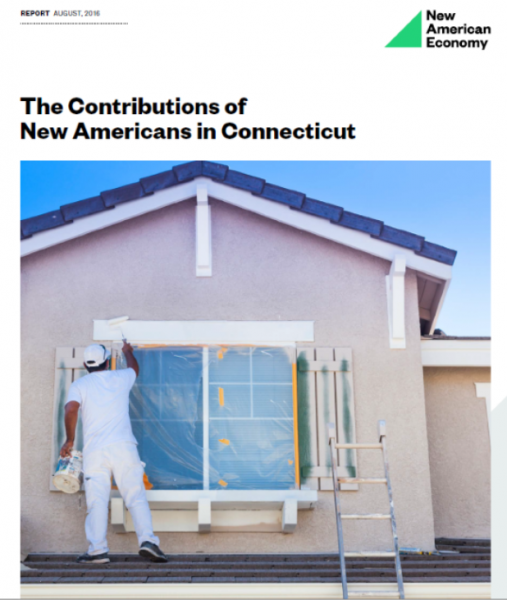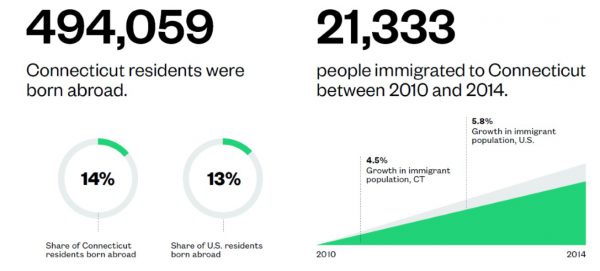Play with Purpose at Two Connecticut Pre-Schools
/Local school systems in Enfield and Manchester implemented a purposeful play initiative, with support from LEGO Community Fund US and the Hartford Foundation for Public Giving. The results of the initiative are highlighted in a new video, which emphasizes that there’s more to play than may be apparent at first glance. Program organizers point out that “young children are naturally curious and full of life. Provided a supportive environment, they will joyfully splash, build and smash, pretend, sing, and dance.” While they are having a ton of fun, they are also making sense of the world and learning through exploration, experimentation and social interaction.
Program organizers point out that “young children are naturally curious and full of life. Provided a supportive environment, they will joyfully splash, build and smash, pretend, sing, and dance.” While they are having a ton of fun, they are also making sense of the world and learning through exploration, experimentation and social interaction.
The LEGO Community Fund US has long asserted that learning through play enables children to become creative and engaged lifelong learners. In 2014, they put forward a proposal and funding to develop and test new materials to advance facilitated play in children’s homes, preschool and kindergarten. The idea is that a young child’s parents and teachers should really be facilitators of intentional play experiences.
The Hartford Foundation matched LEGO’s grant, and the Connecticut Office of Early Childhood participated with in-kind funds to create a training video, making the initiative a cross-sector effort. Laura Post, Vice President of Consumer Insights, LEGO Group, said of the collaboration, “We shared, as organizations, a passion for early childhood.” The pilot was run in Manchester and Enfield, home of LEGO’s U.S. headquarters.
The collaborative, 17-month initiative ran from January 2015 through May 2016. During that time, participating parents and educators learned how facilitated play can support children’s cognitive, social and emotional development. Emphasis was placed on how to teach young children, not what to teach them. The goal was to incorporate life and academic skills in a way that is fun for young children.
The Supporting Educational Success through Playful Learning workshops, that Enfield held in English and Spanish, were a catalyst for the development of a community campaign on the importance of play.
Schools Superintendent Dr. Jeff Shumann said the program sets students up for success in the future. “It gives them those interpersonal skills, creative thinking skills, the problem solving skills, and certainly the communication skills that will help them enhance their learning as they get into deeper and more rigorous academics in the coming years.”
Kindergarten and pre-K teachers are receiving coaching to integrate purposeful play into all curriculum areas. Early educators participated in a series of play based workshops, and families attended play events, gaining an understanding of the value of play.
 Manchester’s Supervisor of Student Development, Karen Gray, says it became “obvious how developmentally appropriate it is for children to play, and to have fun, and to smile and to laugh.” As they did, teachers would “see them develop cognitively," although "they are not necessarily aware of the skills that they are actually developing.”
Manchester’s Supervisor of Student Development, Karen Gray, says it became “obvious how developmentally appropriate it is for children to play, and to have fun, and to smile and to laugh.” As they did, teachers would “see them develop cognitively," although "they are not necessarily aware of the skills that they are actually developing.”
Adds Latasha Easterling-Turnquest, District Director of Manchester Public Schools’ Family Resource Centers, “Given the opportunity, a child, through play, can show you what he or she can really do.”
PHOTOS: Jeff Shumann, Karen Gray.
https://youtu.be/y20-G6AnIV0





 A sweeping mandate for these manufacturers to cover all labor and replacement costs associated with warranty claims would have led to higher prices, they explain, along with weakened consumer protections, and fewer products available to consumers. The legislation would have also required manufacturers to address warranty claims within 30 days’ receipt of a claim – which industry officials say would have been “an unreasonable timeframe” to comply with.
A sweeping mandate for these manufacturers to cover all labor and replacement costs associated with warranty claims would have led to higher prices, they explain, along with weakened consumer protections, and fewer products available to consumers. The legislation would have also required manufacturers to address warranty claims within 30 days’ receipt of a claim – which industry officials say would have been “an unreasonable timeframe” to comply with.
 In Connecticut, April 5, 2017, was the Connecticut SAT School Day administration. SAT scores are used by the Connecticut State Department of Education (CSDE) for school and district accountability purposes, state Education Commissioner Diana Wentzell explained in a
In Connecticut, April 5, 2017, was the Connecticut SAT School Day administration. SAT scores are used by the Connecticut State Department of Education (CSDE) for school and district accountability purposes, state Education Commissioner Diana Wentzell explained in a  Hyman found that, prior to the policy, a substantial number of Michigan’s low-income students didn’t take the ACT even though they would have scored at or above the standard for college readiness. That might been due to financial or logistical barriers, like the cost of the test (between $30 and $50) or difficulties traveling to an exam center on a Saturday. (Both the SAT and ACT offer fee waivers to low-income students, but the study notes that the waivers are underused.)
Hyman found that, prior to the policy, a substantial number of Michigan’s low-income students didn’t take the ACT even though they would have scored at or above the standard for college readiness. That might been due to financial or logistical barriers, like the cost of the test (between $30 and $50) or difficulties traveling to an exam center on a Saturday. (Both the SAT and ACT offer fee waivers to low-income students, but the study notes that the waivers are underused.) search has helped establish the field of quantum computation with solid-state devices. The Connecticut Medal of Science is the state’s highest honor for scientific achievement in fields crucial to Connecticut’s economic competiveness and social well-being.
search has helped establish the field of quantum computation with solid-state devices. The Connecticut Medal of Science is the state’s highest honor for scientific achievement in fields crucial to Connecticut’s economic competiveness and social well-being.



 since 1897. In 2015, Saint Francis became part of Trinity Health of New England, an integrated health care delivery system that is a member of Trinity Health, Livonia, MI, one of the largest multi-institutional Catholic health care delivery systems in the nation.
since 1897. In 2015, Saint Francis became part of Trinity Health of New England, an integrated health care delivery system that is a member of Trinity Health, Livonia, MI, one of the largest multi-institutional Catholic health care delivery systems in the nation.






 Sponsor), Eversource (Gold Sponsor), AT&T (Gold Sponsor), Accounting Resources, Inc. (Silver Sponsor), Qualidigm (Silver Sponsor), CT by the Numbers (Silver Sponsor), and Aeton Law Partners (Silver Sponsor). The David Alan Hospitality Group and Capture provided in-kind services.
Sponsor), Eversource (Gold Sponsor), AT&T (Gold Sponsor), Accounting Resources, Inc. (Silver Sponsor), Qualidigm (Silver Sponsor), CT by the Numbers (Silver Sponsor), and Aeton Law Partners (Silver Sponsor). The David Alan Hospitality Group and Capture provided in-kind services.



























